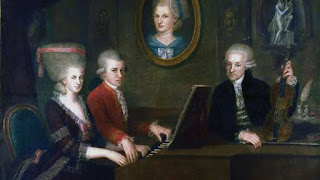Step 2.4 Notes
- Heike Monogatari is an important war chronicle relating the struggles between the Genji family and the Heike family in the 11th and 12th centuries.
- Taihei-ki is another important work chronicling the great political and social disturbance during the 14th century.
- Chushingura is the title of kabuki and noh drama based on the story of loyal ronins, who wreak vengeance for the death of their lord, ASANO Naganori, in 1701.
- I owe the origin and development of kodan to ASAHIDO Nanryo’s Zokuzoku Meiji-ki Osaka-no Engei-sokkibon Kiso-kenkyu (‘A Foundational Study on the Shorthand Books of Oral Performance in Osaka’) (Osaka: Taru Shuppan, 2011).
- TSURUMI Shunsuke, ‘Edo Period in Contemporary Popular Culture’, Modern Asian Studies, 18.4 (1984), 747-55 (p. 747). Tagusari Tsunenori is also pronounced as ‘Takusari Koki’.
- The popularity of these shorthand storybooks, largely thanks to that of rakugo and kodan, contributed to the unification of the written and spoken language in modern Japanese literature.
- A concise account of the Tatsukawa Bunko in English is found at https://uniqueatpenn.wordpress.com/2013/04/23/early-taisho-japanese-juvenile-pocket-fiction-tachikawa-bunko-and-its-imitators/
- ADACHI Kenichi, Tatsukawa Bunko-no Eiyu-tachi (The Heroes in the Tatsukawa Bunko Stories) (Tokyo: Bunwa Shobo, 1980), pp. 97-103.
Step 2.5 Notes
- My account in this step is partly indebted to the following studies: Kinko Ito, ‘Manga in Japanese History’, in Japanese Visual Culture: Explorations in the World of Manga and Anime, ed. by Mark W. MacWilliams, foreword by Frederic L. Schodt (Armonk, NY: Sharpe, 2008), pp. 26-47; Helen McCarthy, A Brief History of Manga (Lewes, East Sussex: Ilex, 2014). Available on Google Books
- UEDA Nobumichi, however, suspects an exaggeration and surmises that the true number must have been around 150,000. See his webpage (in Japanese) at http://nob.internet.ne.jp/note/note_19.html
- KATO Kenichi, Shonen Kurabu Jidai: Henshucho-no Kaiso (Age of Boys’ Club: A Recollection by an Editor-in-Chief) (Tokyo: Kodan-sha, 1968) 『少年俱楽部時代 : 編集長の回想』 Available on Amazon
- McCarthy, p.20.
- Ito, pp.35-37.
- Johannes Hirschmeier and Tsunehiko Yui, The Development of Japanese Business: 1600-1973 (Cambridge, MA: Harvard University Press, 1975), p. 242. Available on Amazon
- Isao Shimizu, Manga no rekishi (A History of Manga) (Tokyo: Iwanami Shoten, 1991), p. 190. 清水 勲『漫画の歴史』 Available on Amazon
Step 2.11 Notes
- The concept of makyu is said to be first introduced in KAIZUKA Hiroshi’s Kuri-kuri Toshu (Kuri-kuri the Pitcher, 1958-63 in Omoshiro Book). NATSUME Fusanosuke has pointed out the close similarity of Kyojin no Hoshi and FUKUMOTO Kazuya and CHIBA Tetsuya’s Chikai no Makyu (Magic Ball of Vow, 1961-62 in Weekly Shonen Magazine). See Natsume Fusanosuke, Kieta Makyu (Magic Balls Vanished) (1991; pbk edn Tokyo: Shinchosha, 1994), pp. 26-28.
- Major League Ball No. 3 miraculously gets out of the way of the bat. The similarity with It Happens Every Spring, an American film in 1949, is mentioned in the work itself.
- Here I owe my description to Shimizu Satoshi, Koshien Yakyu-no Arukeoroji (Archeology of Koshien Baseball) (Tokyo: Shinhyoron, 1998).
- Shimizu, p. 250, translated by Takahashi.
- Sugimoto Atsuo, ‘Gekijo-to-shiteno Koshien’ (Koshien as a Theatre), in Koko Yakyu-no Shakaigaku (Sociology of High School Baseball), ed. by Esashi Shogo and Komuku Hiroshi (Kyoto: Sekai Shiso-sha, 1994), pp. 15-38.
Step 2.12 References
- Ministry of Education, Culture, Sports, Science and Technology of Japan, ‘Koko Kyoiku-no Genjo’ (Present State of High School Education) [updated in 2011].
- Nakazawa Atsushi, ‘Gakko Undobukatsudo-no Sengo-shi 1’ (Post-bellum History of School Sports Club Activities 1), Hitotsubashi Shakai-kagaku (Hitotsubashi Journal of Social Science), 3 (2011), 25-46 (pp. 26-27).
- Nakazawa Atsushi, ‘Gakko Undobukatsudo-no Sengo-shi 2’ (Post-bellum History of School Sports Club Activities 2), Hitotsubashi Shakai-kagaku (Hitotsubashi Journal of Social Science), 3 (2011), 47-73 (p. 59).

Comments